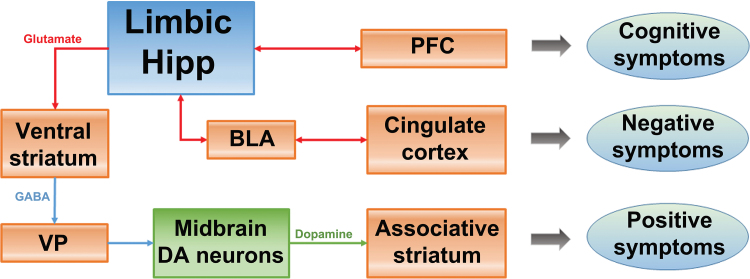Fig. 3.
In schizophrenia, the hippocampus is proposed to be hyperactive, leading to an overdrive in the responsivity of midbrain DA neurons that project to the associative striatum. This is proposed to underlie the positive symptoms of schizophrenia. Additionally, a hyperactive, dysrhythmic limbic hippocampus can also interfere with the function of other circuits. Thus, the hippocampus-prefrontal cortex (PFC) projection would lead to disruption of PFC activity and rhythmicity, leading to cognitive disruption. Moreover, the hippocampus-basolateral amygdala (BLA) projection would interfere with the BLA-limbic cortical control of emotional responses, possibly leading to negative symptoms. Therefore, a hyperactive, dysrhythmic limbic hippocampus potentially disrupts multiple interconnected circuits, and could contribute to all 3 symptom classes of schizophrenia.

